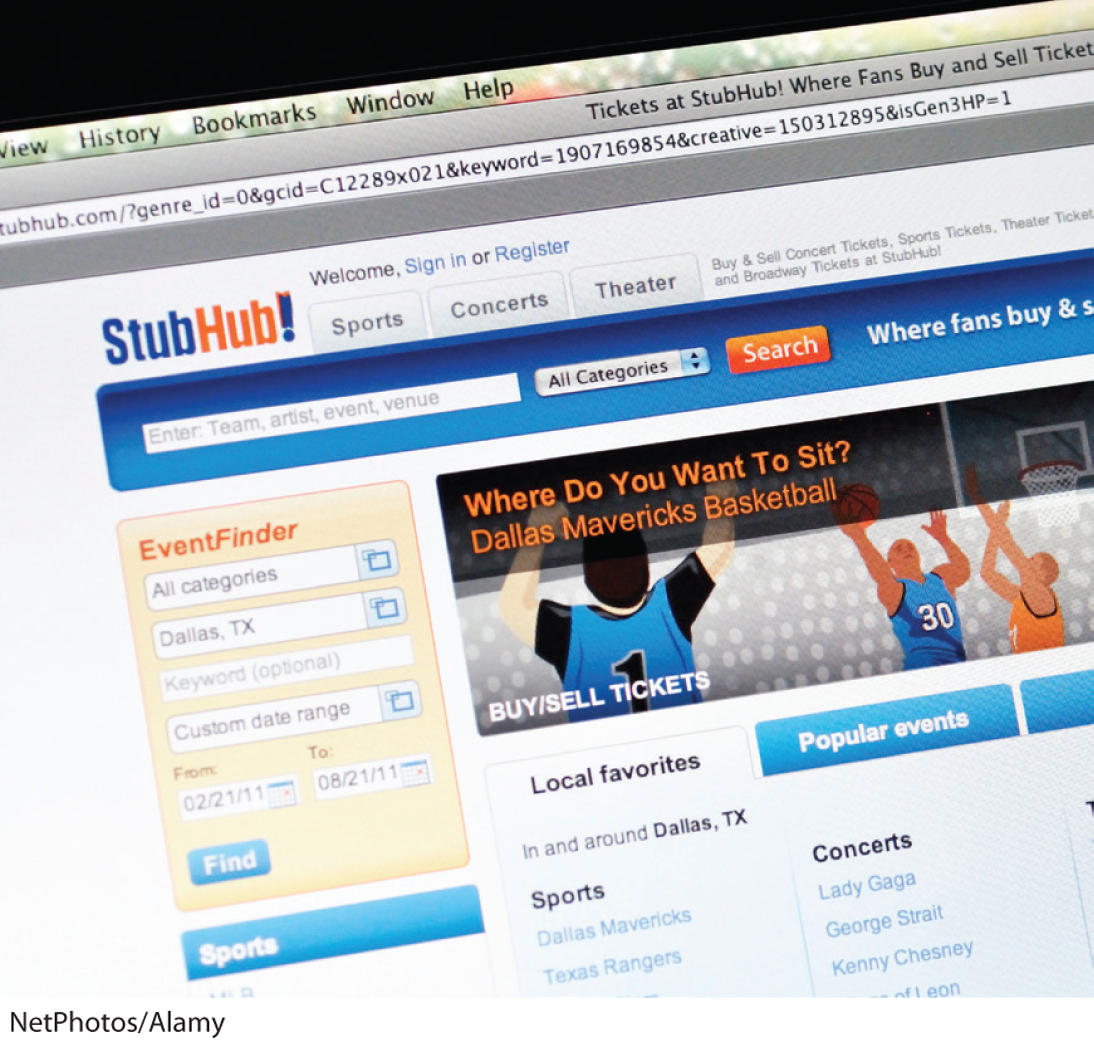CHAPTER 3 Supply: Thinking Like a Seller

How much would you sell your seat for?
Just as your day is filled with decisions about what to buy, you also have to decide what to sell. After all, everything that is bought is also sold. While you might not think of yourself as a seller if you aren’t (yet!) managing a business, you are already managing one very important small business: Your Own Undertaking (or Y.O.U., for short). YOU are already making very important supply decisions. You may have sold concert tickets on StubHub; perhaps you have also sold furniture or a big ticket item, like an old car. You may hold a part-time job, where you sell your labor in return for an hourly wage.
You also supply things in transactions that don’t involve money. Your household is like a small business, and you might produce cooking and cleaning services in return for similar services from your family or housemates. You probably supply child care, transport, and advice to those you love. You also supply camaraderie to your friends, an audience to online advertisers, and your attention to this important chapter on supply.
In this chapter, we’ll dig into supply—the decisions that we make as sellers. The structure of this chapter largely parallels our analysis of demand. We’ll start with individual decisions and apply the core principles of economics to help guide you to make good supply decisions. Next, we’ll pan back and assess total market supply, which is the sum of these individual decisions. We’ll then explore how changing market conditions shift supply.
There’s a lot to cover with supply—the global economy consists of millions of businesses producing and selling a dazzling array of goods. But the same logic underpins every business decision. Let’s start by putting ourselves into the shoes of a manager, trying to decide how much to produce and sell.